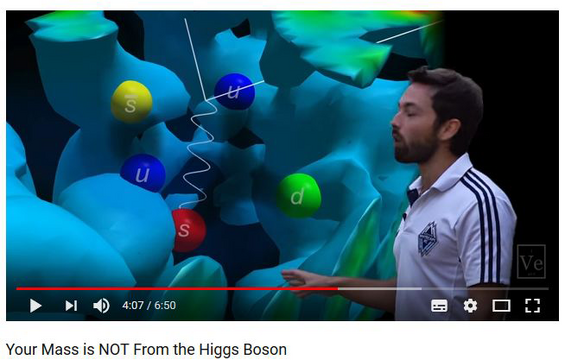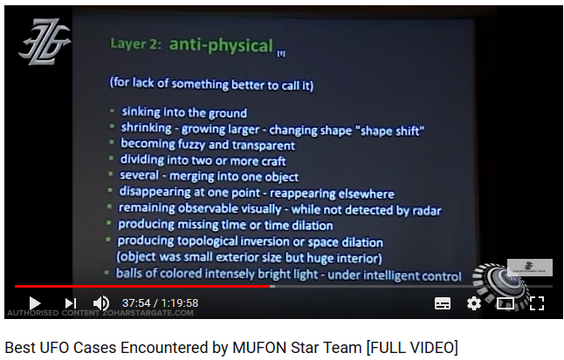That’s where the quantum Zeno Effect — a.k.a. Turing’s Paradox — comes in. Taking its name from Zeno’s arrow paradox (a moving arrow can’t actually be seen moving in any single instant, which means it’s not really moving at all), this idea basically states that if you never stop observing a particle that undergoes decay, then that particle will never decay. If that particle never decays, you’ve basically stopped it from doing anything. You’ve stopped time.
Quantum Zeno effect. The quantum Zeno effect (also known as the Turing paradox) is a feature of quantum mechanical systems allowing a particle's time evolution to be arrested by measuring it frequently enough with respect to some chosen measurement setting.
Experiments and discussion
Experimentally, strong suppression of the evolution of a quantum system due to environmental coupling has been observed in a number of microscopic systems.
In 1989, David J. Wineland and his group at NIST[33] observed the quantum Zeno effect for a two-level atomic system that was interrogated during its evolution. Approximately 5000 9Be+ ions were stored in a cylindrical Penning trap and laser cooled to below 250 mK. A resonant RF pulse was applied which, if applied alone, would cause the entire ground state population to migrate into an excited state. After the pulse was applied, the ions were monitored for photons emitted due to relaxation. The ion trap was then regularly "measured" by applying a sequence of ultraviolet pulses, during the RF pulse. As expected, the ultraviolet pulses suppressed the evolution of the system into the excited state. The results were in good agreement with theoretical models. A recent review describes subsequent work in this area.[34]
In 2001, Mark G. Raizen and his group at the University of Texas at Austin observed the quantum Zeno effect for an unstable quantum system,[35] as originally proposed by Sudarshan and Misra.[1] They also observed an anti-Zeno effect. Ultracold sodium atoms were trapped in an accelerating optical lattice and the loss due to tunneling was measured. The evolution was interrupted by reducing the acceleration, thereby stopping quantum tunneling. The group observed suppression or enhancement of the decay rate, depending on the regime of measurement.
In 2015, Mukund Vengalattore and his group at Cornell University demonstrated a quantum Zeno effect as the modulation of the rate of quantum tunnelling in an ultra-cold lattice gas by the intensity of light used to image the atoms.[36]
The Quantum Zeno Effect is used in commercial atomic magnetometers and naturally by birds' magnetic compass sensory mechanism (magnetoreception).[37]
It is still an open question how closely one can approach the limit of an infinite number of interrogations due to the Heisenberg uncertainty involved in shorter measurement times. It has been shown, however, that measurements performed at a finite frequency can yield arbitrarily strong Zeno effects.[38] In 2006, Streed et al. at MIT observed the dependence of the Zeno effect on measurement pulse characteristics.[39]
The interpretation of experiments in terms of the "Zeno effect" helps describe the origin of a phenomenon. Nevertheless, such an interpretation does not bring any principally new features not described with the Schrödinger equation of the quantum system.[40][41]
Even more, the detailed description of experiments with the "Zeno effect", especially at the limit of high frequency of measurements (high efficiency of suppression of transition, or high reflectivity of a ridged mirror) usually do not behave as expected for an idealized measurement.[17]
It was shown that the Quantum Zeno effect persists in the many-worlds and relative states interpretations of quantum mechanics.[42]
Quantum Zeno effect - Wikipedia
'Zeno effect' verified: Atoms won't move while you watch | Cornell Chronicle
It's not just theoretical. The Cornell experiment is just the latest in a series of experiments since then confirming that the quantum Zeno effect really happens. (There's also an "Anti-Zeno Effect," whereby staring at the metaphorical quantum pot brings it to a boil more quickly -- also experimentally confirmed.)
Quantum 'Weeping Angel' Effect Freezes Atoms In Place
Quantum Zeno effect. The quantum Zeno effect (also known as the Turing paradox) is a feature of quantum mechanical systems allowing a particle's time evolution to be arrested by measuring it frequently enough with respect to some chosen measurement setting.
Experiments and discussion
Experimentally, strong suppression of the evolution of a quantum system due to environmental coupling has been observed in a number of microscopic systems.
In 1989, David J. Wineland and his group at NIST[33] observed the quantum Zeno effect for a two-level atomic system that was interrogated during its evolution. Approximately 5000 9Be+ ions were stored in a cylindrical Penning trap and laser cooled to below 250 mK. A resonant RF pulse was applied which, if applied alone, would cause the entire ground state population to migrate into an excited state. After the pulse was applied, the ions were monitored for photons emitted due to relaxation. The ion trap was then regularly "measured" by applying a sequence of ultraviolet pulses, during the RF pulse. As expected, the ultraviolet pulses suppressed the evolution of the system into the excited state. The results were in good agreement with theoretical models. A recent review describes subsequent work in this area.[34]
In 2001, Mark G. Raizen and his group at the University of Texas at Austin observed the quantum Zeno effect for an unstable quantum system,[35] as originally proposed by Sudarshan and Misra.[1] They also observed an anti-Zeno effect. Ultracold sodium atoms were trapped in an accelerating optical lattice and the loss due to tunneling was measured. The evolution was interrupted by reducing the acceleration, thereby stopping quantum tunneling. The group observed suppression or enhancement of the decay rate, depending on the regime of measurement.
In 2015, Mukund Vengalattore and his group at Cornell University demonstrated a quantum Zeno effect as the modulation of the rate of quantum tunnelling in an ultra-cold lattice gas by the intensity of light used to image the atoms.[36]
The Quantum Zeno Effect is used in commercial atomic magnetometers and naturally by birds' magnetic compass sensory mechanism (magnetoreception).[37]
It is still an open question how closely one can approach the limit of an infinite number of interrogations due to the Heisenberg uncertainty involved in shorter measurement times. It has been shown, however, that measurements performed at a finite frequency can yield arbitrarily strong Zeno effects.[38] In 2006, Streed et al. at MIT observed the dependence of the Zeno effect on measurement pulse characteristics.[39]
The interpretation of experiments in terms of the "Zeno effect" helps describe the origin of a phenomenon. Nevertheless, such an interpretation does not bring any principally new features not described with the Schrödinger equation of the quantum system.[40][41]
Even more, the detailed description of experiments with the "Zeno effect", especially at the limit of high frequency of measurements (high efficiency of suppression of transition, or high reflectivity of a ridged mirror) usually do not behave as expected for an idealized measurement.[17]
It was shown that the Quantum Zeno effect persists in the many-worlds and relative states interpretations of quantum mechanics.[42]
Quantum Zeno effect - Wikipedia
'Zeno effect' verified: Atoms won't move while you watch | Cornell Chronicle
It's not just theoretical. The Cornell experiment is just the latest in a series of experiments since then confirming that the quantum Zeno effect really happens. (There's also an "Anti-Zeno Effect," whereby staring at the metaphorical quantum pot brings it to a boil more quickly -- also experimentally confirmed.)
Quantum 'Weeping Angel' Effect Freezes Atoms In Place



